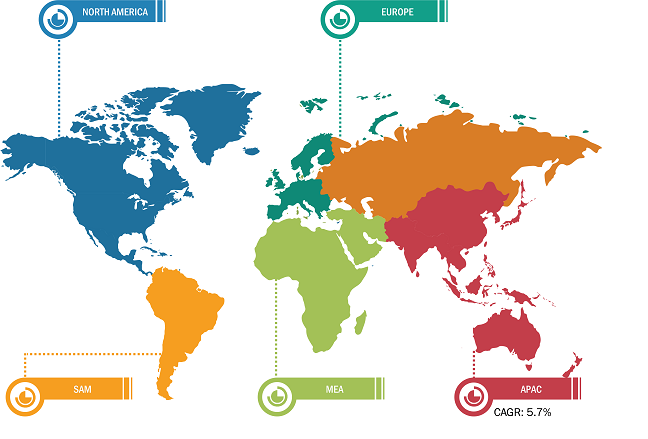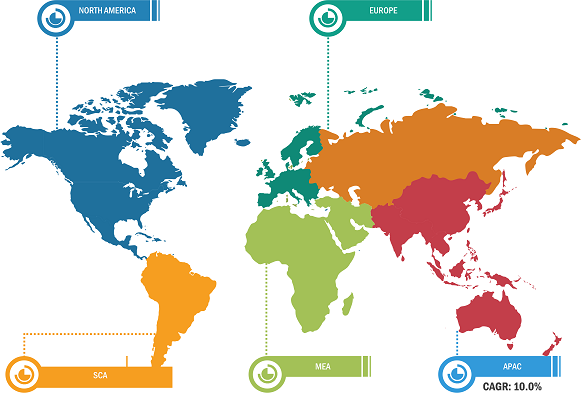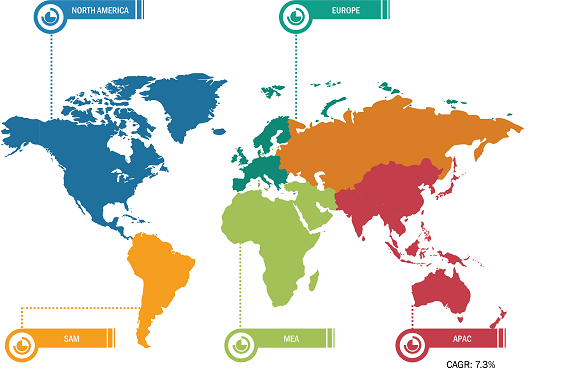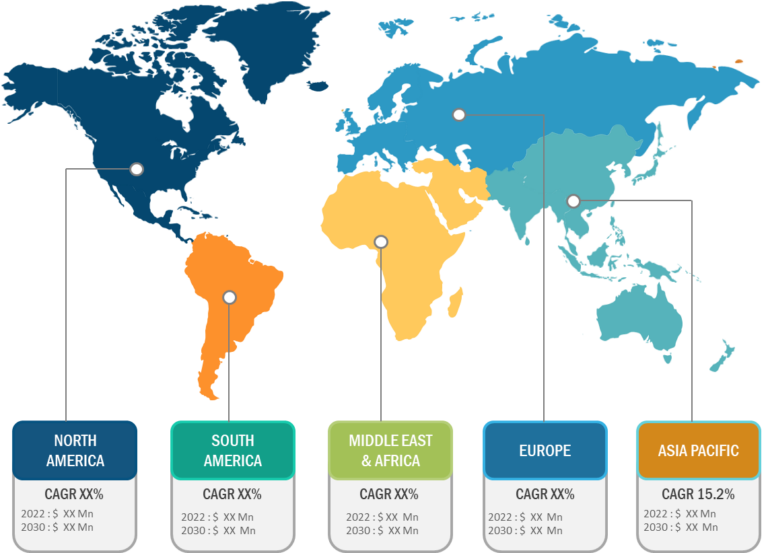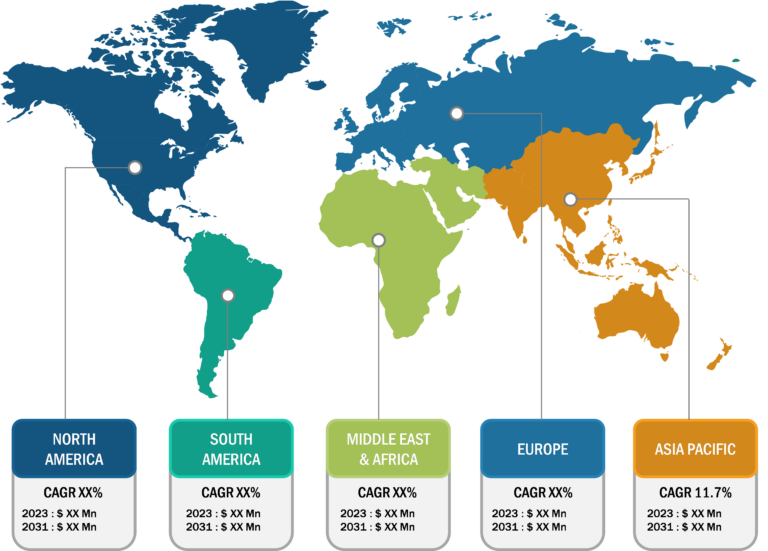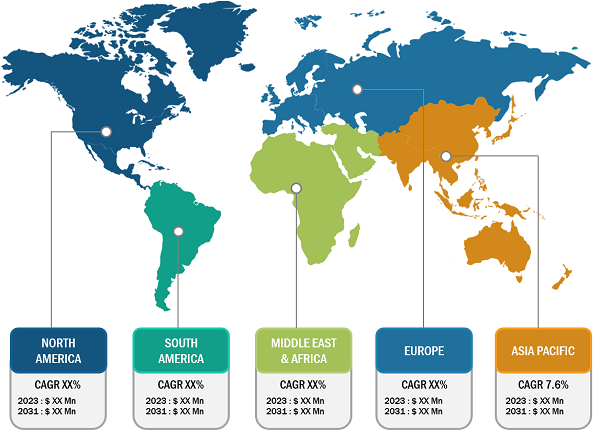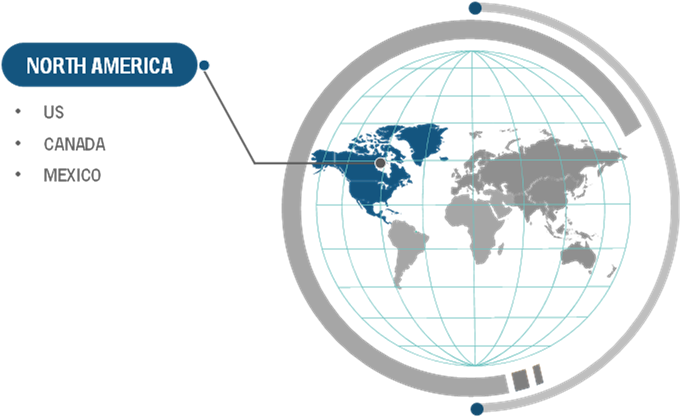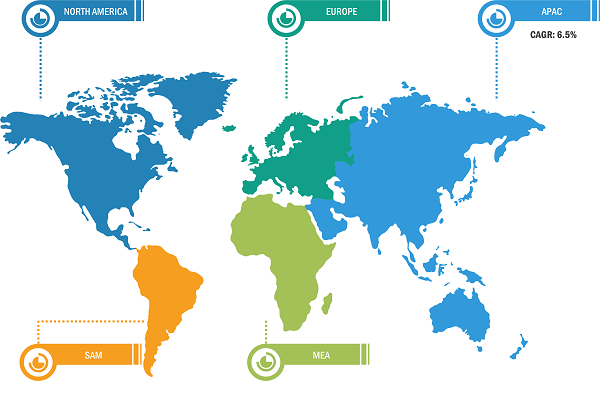
Menstrual Cups Market
The surge in demand for menstrual cups in Asia Pacific can be attributed to various factors, including rising cultural shifts, increasing awareness, and the growing importance of women’s health. There has been a rising movement toward breaking taboos surrounding menstruation in many Asian countries. As societies become more open to discussing menstrual health, individuals are exploring alternative and more sustainable options, such as menstrual cups, which offer comfort and convenience while challenging traditional norms associated with menstrual hygiene. For instance, in September 2023, a pilot program with an aim to provide menstrual cups to women was launched in Chennai, India. In September 2023, under the “Thinkal” project, ~1,500 women in the reproductive age group from economically poor households in 12 localities under the Greater Chennai Corporation’s wards in South Chennai will receive menstrual cups in the next three months. Hence, the rise in such initiatives increases the awareness and demand for menstrual cups across the region.
Asia Pacific has witnessed rapid urbanization and changing lifestyles, with more women joining the workforce and leading busy lives. Menstrual cups, being long-lasting and reliable, are gaining popularity as a practical solution for those seeking a convenient, low-maintenance menstrual hygiene option. The adaptability of menstrual cups to different lifestyles, including travel and outdoor activities, contributes to their increasing acceptance among women in Asia.
Economic factors also play a significant role in the growing demand for menstrual cups in Asia Pacific. In many countries across the region, disposable menstrual products can be expensive and contribute to a significant monthly expense. The cost-effectiveness of menstrual cups, considering their reusable nature, makes them attractive for individuals seeking an affordable and sustainable solution. As economic conditions improve and disposable incomes rise, more people in Asia Pacific are likely to use menstrual cups as a practical and cost-saving choice for menstrual hygiene.

Increasing Demand for Sustainable Menstrual Products
The surging demand for sustainable menstrual products is a primary driver propelling the menstrual cup market. In recent years, there has been a global shift toward sustainability, with consumers becoming increasingly aware of the environmental impact of traditional disposable menstrual products. Traditional pads and tampons contribute significantly to plastic waste, and their production involves consuming resources and energy. Every year, an average woman trashes nearly 150 kilograms of nonbiodegradable waste. In India alone, roughly 121 million women and girls use an average of eight disposable and non-compostable pads per month, generating 1.021 billion pads waste monthly, 12.3 billion pads waste annually, and 113,000 metric ton of annual menstrual waste. Menstrual cups have emerged as a leading choice as individuals seek eco-friendly alternatives due to their reusable nature. This heightened environmental consciousness drives consumers to opt for products that minimize their ecological footprint, boosting the demand for menstrual cups. The increased demand for sustainable menstrual products is closely tied to a broader movement advocating women’s health and well-being. Consumers are increasingly prioritizing products that are not only good for the environment but also safe and beneficial for their health. Menstrual cups, typically made from medical-grade silicone, rubber, or thermoplastic elastomers, are considered safe and hygienic, reducing the risk of irritation and allergic reactions often associated with traditional products. The alignment of menstrual cups with environmental sustainability and women’s health contributes to their appeal, acting as a driver for their rising popularity.
Menstrual Cups Market: Segmental Overview
The global menstrual cups market is segmented on the basis of type, material, distribution channel, and geography. Based on type, the market is categorized into reusable and disposable. The reusable segment is expected to register the highest CAGR during 2022–2030. Reusable menstrual cups represent a sustainable and cost-effective revolution in menstrual hygiene. Typically crafted from medical-grade silicone, rubber, or thermoplastic elastomers, these bell-shaped cups are inserted into the vagina to collect menstrual flow rather than absorbing it like traditional tampons or pads. The flexibility and softness of the material ensure comfort and ease of use, adapting to the user’s anatomy. Reusable menstrual cups can be worn for up to 12 hours, providing leak-free protection and allowing users greater flexibility in managing their periods. One of their most significant advantages is their environmental impact, as they can be reused. The cups significantly reduce the amount of menstrual waste produced, contributing to an eco-friendly menstrual care routine. In addition, the long-term cost savings and the convenience of not needing to purchase disposable products regularly make reusable menstrual cups an increasingly popular choice for users looking for sustainable and practical alternatives in menstrual hygiene. Nixit, Cora, and Blossom Cup are a few of the prominent players operating in the market.
By material, the market is categorized into medical grade silicon, rubber, and thermoplastic elastomer. By distribution channel, the market is categorized into supermarkets and hypermarkets, specialty stores, online retail, and others. By geography, the global menstrual cups market is broadly segmented into North America, Europe, Asia Pacific, the Middle East & Africa, and South & Central America.
Impact of COVID-19 Pandemic on Menstrual Cups Market
The COVID-19 pandemic adversely affected economies and industries due to lockdowns, travel restrictions, and business shutdowns. The menstrual cups industry reported severe disruptions in supply chains and shutdowns of processing, wholesale, and smaller retail businesses in the initial phases of the COVID-19 pandemic. The pandemic hindered the supply chains, manufacturing activities, delivery schedules, and goods sales. The imposition of lockdown measures to curb the spread of SARS-CoV-2 compelled many store operators to keep their stores closed, which resulted in decreased sales of menstrual cups. However, after some relaxation in restrictions in late 2020, the production and sales of menstrual cups exhibited an upward trend.
Menstrual Cups Market: Competitive Landscape
Nixit, Lunette Global, Lena Cup LLC, Diva International Inc., Saalt, Pixie Cup, June Cup, Cora, The Flex Company, and Blossom Cup are among the prominent players operating in the menstrual cups market. The global menstrual cups market players focus on providing high-quality products to fulfill customer demand. They also adopt strategies such as investments in research and development activities, new product launches, and expanding production capacities.

